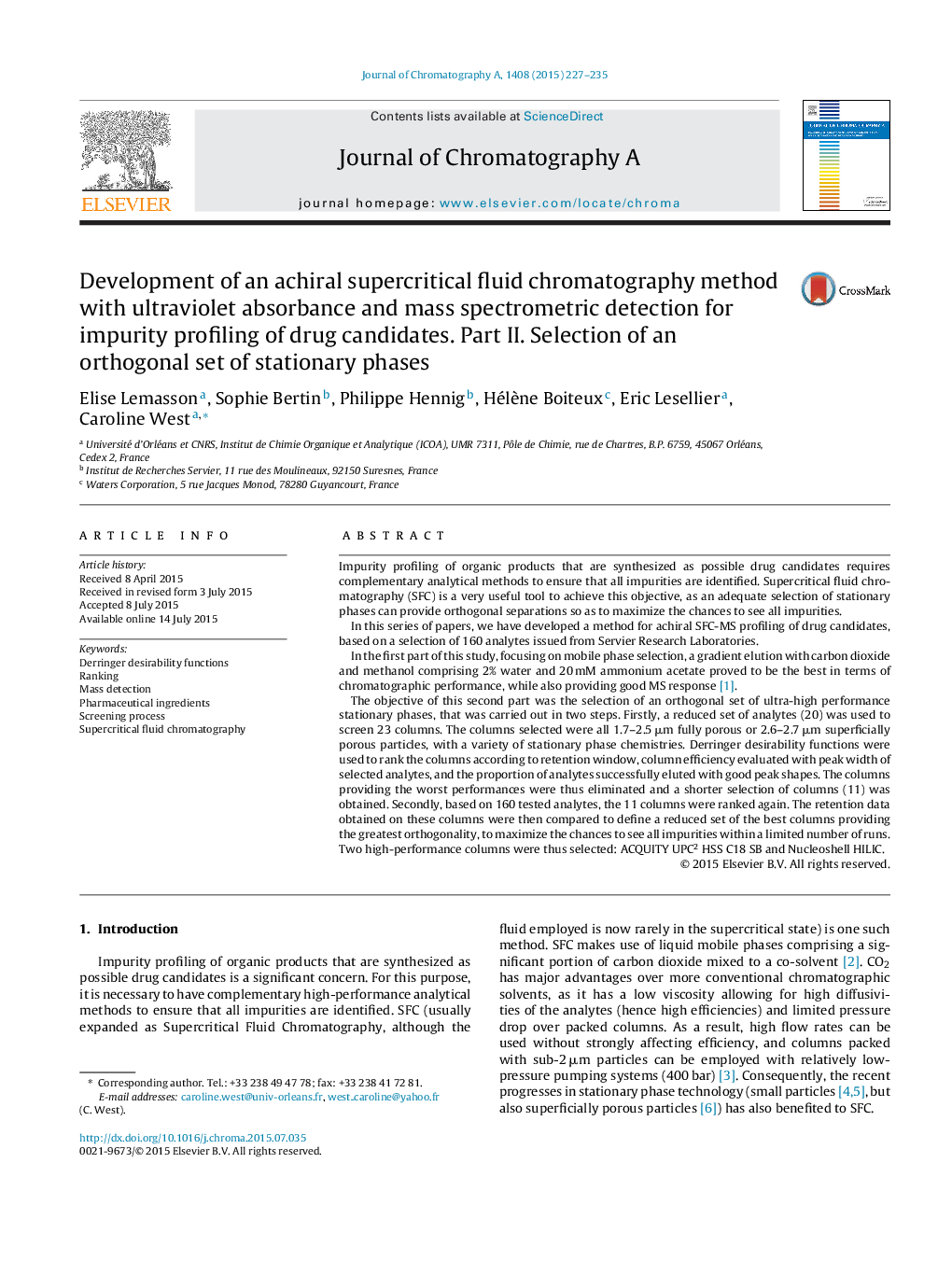| Article ID | Journal | Published Year | Pages | File Type |
|---|---|---|---|---|
| 7611683 | Journal of Chromatography A | 2015 | 9 Pages |
Abstract
The objective of this second part was the selection of an orthogonal set of ultra-high performance stationary phases, that was carried out in two steps. Firstly, a reduced set of analytes (20) was used to screen 23 columns. The columns selected were all 1.7-2.5 μm fully porous or 2.6-2.7 μm superficially porous particles, with a variety of stationary phase chemistries. Derringer desirability functions were used to rank the columns according to retention window, column efficiency evaluated with peak width of selected analytes, and the proportion of analytes successfully eluted with good peak shapes. The columns providing the worst performances were thus eliminated and a shorter selection of columns (11) was obtained. Secondly, based on 160 tested analytes, the 11 columns were ranked again. The retention data obtained on these columns were then compared to define a reduced set of the best columns providing the greatest orthogonality, to maximize the chances to see all impurities within a limited number of runs. Two high-performance columns were thus selected: ACQUITY UPC2 HSS C18 SB and Nucleoshell HILIC.
Keywords
Related Topics
Physical Sciences and Engineering
Chemistry
Analytical Chemistry
Authors
Elise Lemasson, Sophie Bertin, Philippe Hennig, Hélène Boiteux, Eric Lesellier, Caroline West,
